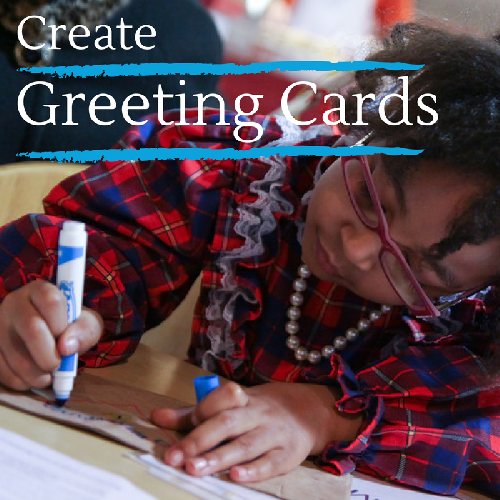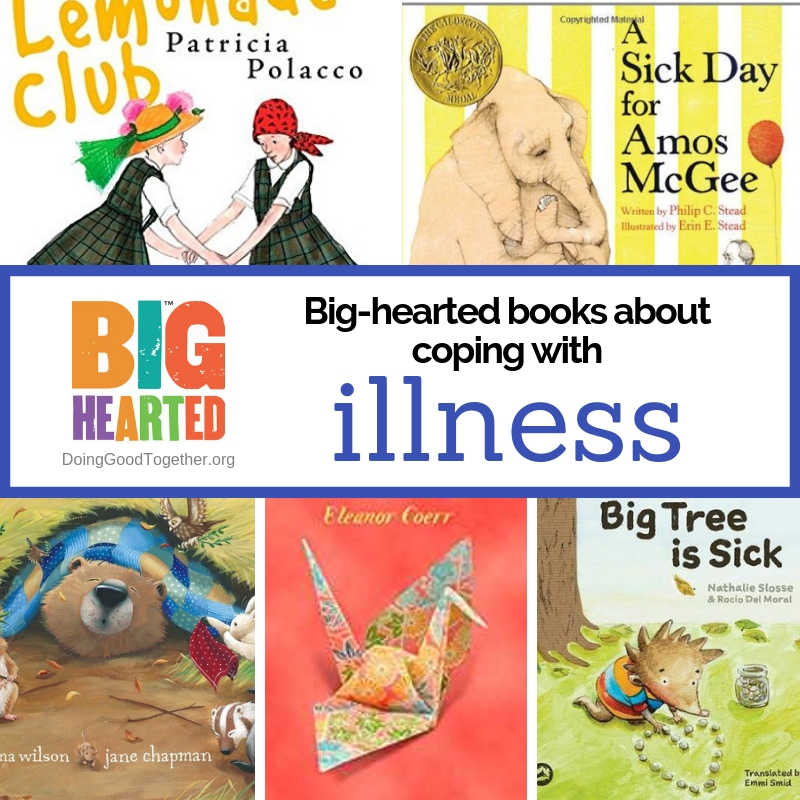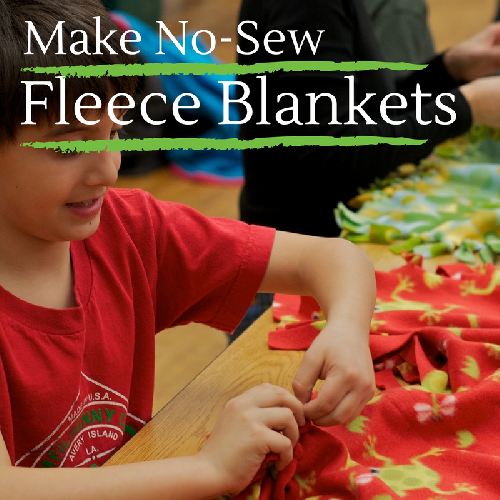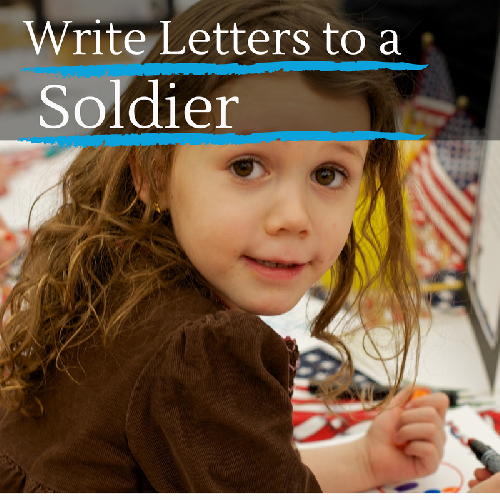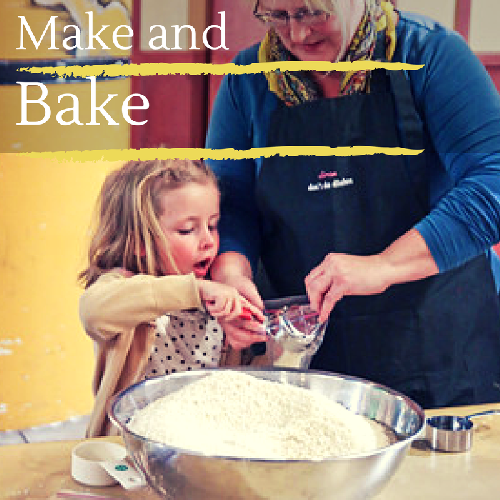Explore our favorite teaching tools.
Like our service projects, this list is continuously evolving. If you don't see your favorite books or websites, we welcome your suggestions in the comment section below.
Preschool and Early Elementary
Big Bird Goes to the Doctor by Tish Sommers, illustrated by Tom Cooke (Golden Press, 1986). What happens when Big Bird goes for his check-up?
Franklin Goes to the Hospital by Paulette Bourgeois, illustrated by Brenda Clark (Scholastic Inc., 2000). Ages 4-8. Franklin’s visit to the hospital to repair a cracked shell can introduce young children to all aspects of a hospital stay.
Going to the Hospital by Fred Rogers, photographs by Jim Judkis (G.P. Putnam’s Sons, 1997). Ages 2-6. A comforting look at hospitals and hospital procedures thorough the experiences of two young children.
The Surgery Book: For Kids by Shivana Bhatia, MD (Authorhouse, 2010). Iggy has to get his tonsils taken out. What could otherwise be a scary experience for a young boy turns into a fun-filled time.
Why Are You So Scared?: A Child’s Book about Parents with PTSD by Beth Andrews, illustrated by Katherine Kirkland (Magination Press, 2011). Ages 5 and up. Using kid-friendly language, this book gives an overview of how to create a harmonious household when a parent is suffering from Post-Traumatic Stress Disorder.
Wishing Wellness: A Workbook for Children of Parents With Mental Illness by Lisa Anne Clarke (Magination Pr., 2006). Ages 6 and up. This book allows and encourages children to express their feelings when facing a life with parents with a mental illness
My Trip to the Hospital by Mercer Mayer (HarperFestival, 2005). Ages 4-8. Little Critter must go to the hospital for the first time when he breaks his leg during a soccer game.
Magic School Bus: Inside the Human Body by Joanna Cole, illustrated by Bruce Degen (Scholastic, Inc., 1990) Ages 4-8. For kids interested in medicine, a fun and informative journey through the human body.
Late Elementary
Because of Anya by Margaret Peterson Haddix (Aladdin, 2004). Ages 8-12. The story of a young girl diagnosed with a rare auto-immune disease and her attempts to hide her illness in order to lead a normal life.
An Elephant in the Room by Jill M. Hastings and Marion H. Typpo ( Hzelden, 1994). Ages 9 and up. Aimed at children and other young relatives of people struggling with alcoholism, this book can open up communication between children and adults about what can be a very confusing topic for children to understand.
Sadako and the Thousand Paper Cranes by Eleanor Coerr, paintings by Ronald Himmler (Puffin, 2004). Ages 8-12. A young Hiroshima girl in the 1940s is sick with leukemia from atom bomb radiation. Legend says that if she folds a thousand paper cranes she’ll get healthy; she decides to try. A true story of courage.
You Shouldn’t Have To Say Goodbye by Patricia Hermes (Sourcebooks Jabberwocky, 2008). Ages 9-12. When Sarah’s mother is diagnosed with cancer, her family must deal with feelings of pain and loss.
Doctor Wars Board Game by Lurp Designs LLC. Ages 10 and up. Collect points while you treat patients. No knowledge of medicine required, only a sense of humor!
Young Adult
Chandra’s Secrets by Allan Straton (Annick Press, 2004). Young Adult. The story of a teenage girl in Africa affected by the HIV/AIDS epidemic.
Deenie by Judy Blume (Delacorte Books for Young Reader, 2010). Ages 12 and up. A young girl copes with scoliosis.
A Mango-Shaped Space by Wendy Mass (Little, Brown Young Readers, 2005). Ages 8-12. The story of a teenage girl suffering from synesthesia, a rare disease where colors are seen in sounds, numbers, and letters.
Young People and Chronic Illness: True Stories, Help and Hope by Kelly Huegel (Free Spirit Publishing, 1998) Teens can learn about others their age struggling with diabetes, epilepsy and other chronic illnesses.
The Dawn Rochelle series and other fictional books by Lurlene McDaniel focus on teenagers who are diagnosed with cancer and other diseases while also experiencing heartache, high school, and family problems.
Adult
Always on Call: When Illness Turns Families into Caregivers by Carole Levine (Vanderbilt University Press, 2004). When illness plagues a family, this commonly leads to taking on the additional task of caregiver. This book offers suggestions on how to juggle these new responsibilities and provides personal insight into the subject.
Shock Waves: A Practical Guide to Living with a Loved One’s PTSD by Cynthia Orange (Hazelden, 2010). When a loved one is diagnosed with Post-Traumatic Stress Disorder, family members and friends can face uncertainty on how to act. Cynthia Orange’s book outlines how to balance the needs and fears of others with still having a healthy family living situation.
Healthy Children
http://www.healthychildren.org/English/Pages/default.aspx
Run by The American Academy of Pediatrics, this website provides invaluable resources on a variety of topics, such as healthy living, family life, and health issues.
Dream Foundation
http://www.dreamfoundation.org/
Organization that grants wishes to adults with terminal illnesses. Includes several ways to help, including “adopting” a dream.
Project Linus
http://www.projectlinus.org/
Make security blankets for children who are seriously ill or traumatized. The website provides free blanket patterns and links to local chapters.
Make-A-Wish Foundation
http://www.wish.org/
Help fulfill the wishes of children with terminal illnesses.


